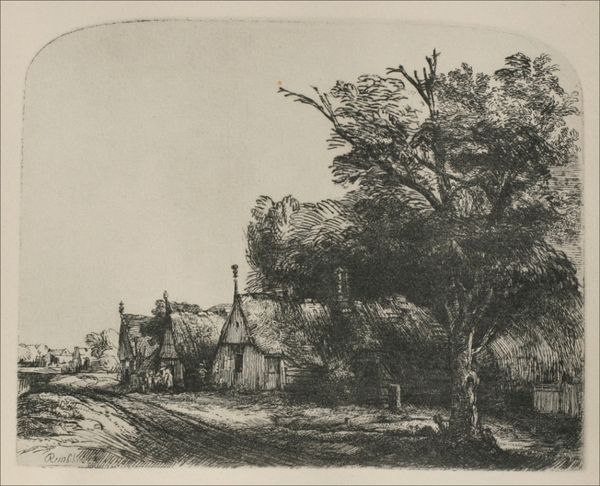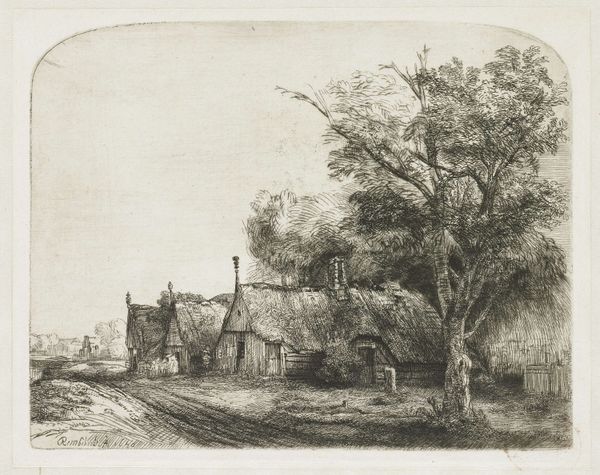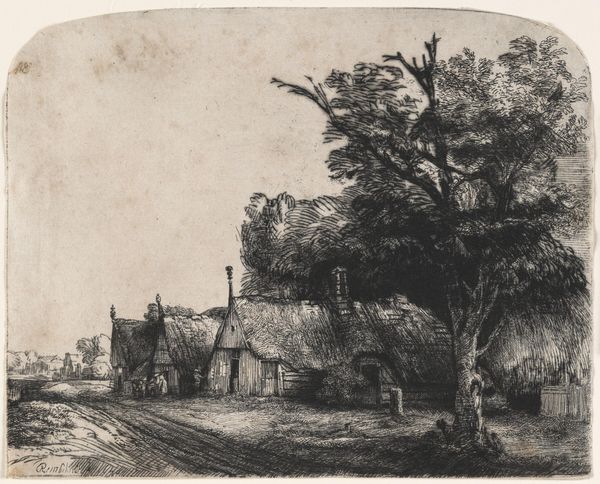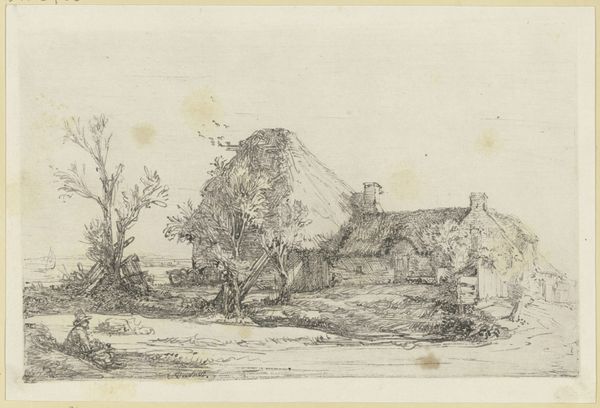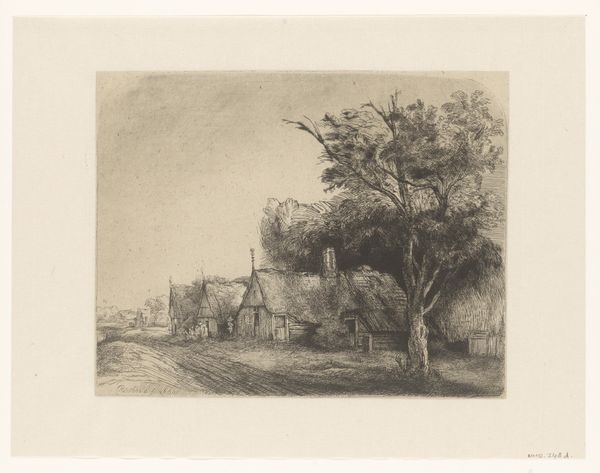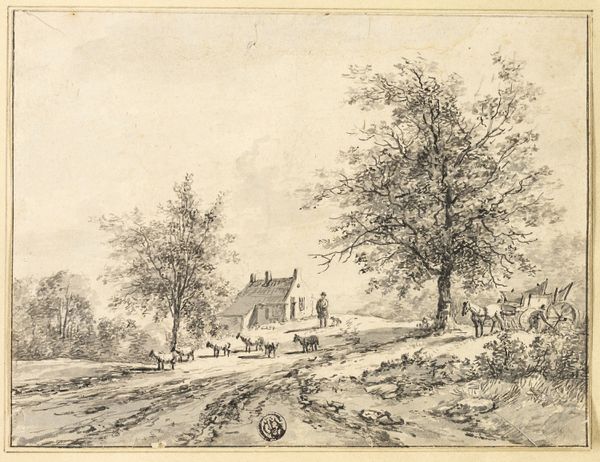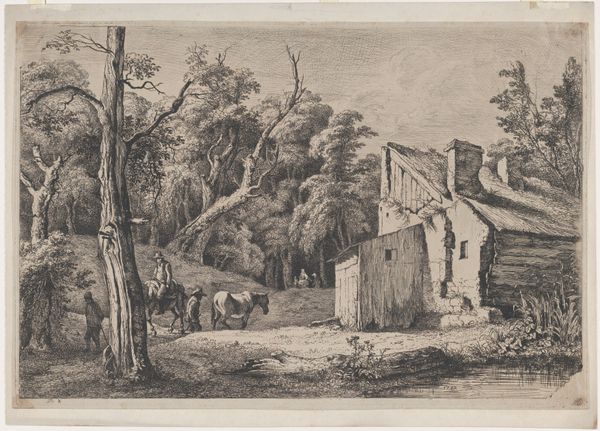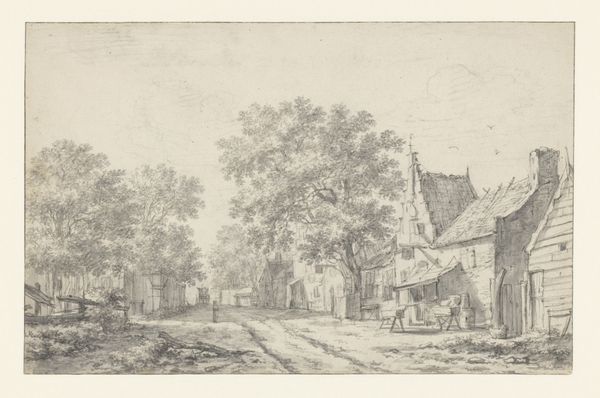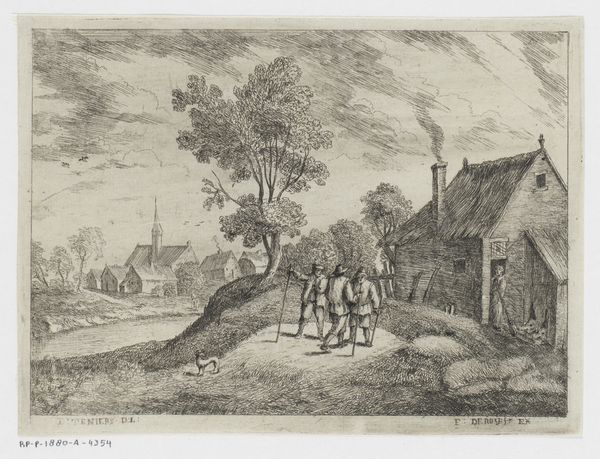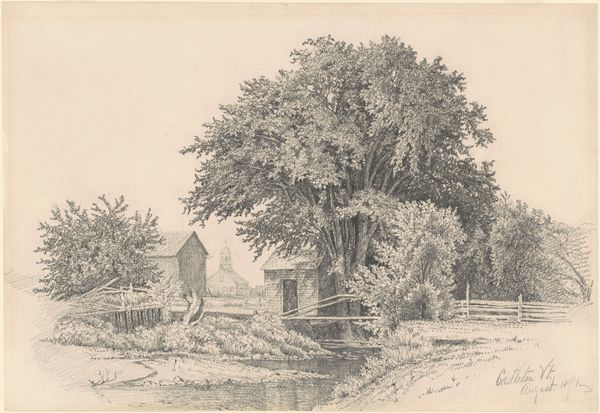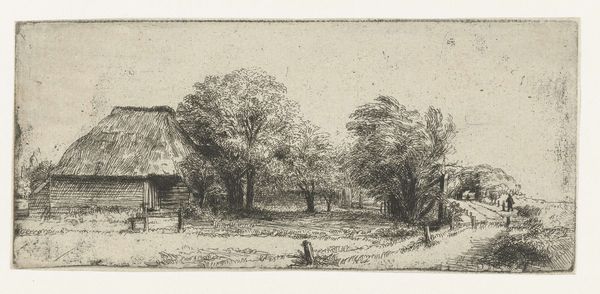
etching
#
dutch-golden-age
#
etching
#
landscape
#
charcoal drawing
#
realism
Dimensions: 20.2 x 16.1 cm
Copyright: Public domain
Rembrandt van Rijn created this etching, "Landscape with Three Huts," using his etching technique to capture a seemingly tranquil scene. Yet, let us look closer: the humble huts, crowned with thatched roofs, suggest more than mere shelter. In this period of Dutch art, these dwellings often symbolize the human connection to nature, a grounding in the earthly. Consider the tree. It is reminiscent of the "arbor vitae," or tree of life—a symbol found across cultures, from ancient Germanic traditions to biblical allegories. See how it simultaneously shelters and overshadows the huts? Similarly, in medieval art, the tree stood as a reminder of mortality, a marker of the passage of time. Here, the tree evokes powerful psychological undercurrents. Its branches, reaching like grasping hands, remind us of humanity's relentless negotiation with nature—a dance between dependence and dominance. It's as if the collective unconscious seeks expression, reminding us of our shared, primal roots. The symbol of the tree, the huts, has been reworked over time in art from the Renaissance to the modern era. It returns, like an old memory, altered yet familiar.
Comments
No comments
Be the first to comment and join the conversation on the ultimate creative platform.
